Web development has its own terminology, job types, tools, and skills like any industry. In web development, backend vs frontend is discussed quite often. What do they mean? Is there any overlap? Can you use them interchangeably?
In this article, we’ll compare backend vs frontend development, talk about the key differences, and get specific about those differences by exploring tools, programming languages, and frameworks used by each type of developer.
Furthermore, we’ll help those just getting into the web development industry. For instance, do you make more money with backend vs frontend development? And what’s the job process like for those working on each part of a website?
Keep reading to check out our in-depth comparison on backend vs frontend web development!
Backend vs Frontend Development — Key Differences
When pitting backend vs frontend development, the differences usually come about in the following categories:
- The areas in which those types of developers work.
- The technology and tools used by each.
- The languages utilized on the backend vs frontend.
- Job requirements and skills.
Let’s start simple:
The backend refers to the technology and interface that runs in the background of a website or web application to either produce a completely server-facing interface or make the frontend possible. The backend is server-facing, often never seen by users.
The frontend refers to technologies presented on the front side of a website or a web application, meaning it’s a client-facing interface for users to move around with elements like a computer browser, buttons, and text.
And now into more detail:
There isn’t just one difference between backend vs frontend development, but rather a series of technologies, tools used, skills required, and languages implemented that make them entirely separate from each other. Of course, they work together to render the same final product: a website or web app; yet, that discounts the intricacies that go into both the backend and frontend development processes.
Here’s a deeper dive into what makes each unique.
Backend Development
This is what you can expect of backend development:
- The backend of a web app or website handles every aspect of data management for a web project, especially when it comes to data storage, delivery, and organization.
- The backend is the server-side part of website development. Sometimes this means the website or app created only renders on the server-side, like an internal database working in the background or a file server logging resources for a corporation. Yet, in web development, the backend often links directly to the frontend by offering processes and services like database lookups, cloud storage, and file management for those working from the frontend. An example is a user database (backend) on a dating website, where the information gets presented as a profile (frontend).
- The backend is almost always hidden from the user’s view. It’s like the magic behind the curtain; many people haven’t any clue how a website works, but the backend often tells the frontend elements what to do.
- Backend development utilizes languages such as PHP, Python, C++, Ruby, and Java.
- Some backend frameworks include Laravel, Spring, Rails, Django, and Express. Other scripting languages include Ruby, GO, REST, and C#.
- Frontend users technically interact with the backend via a frontend interface, but they never actually see the backend workings.
- Additional tasks, like making libraries and writing APIs, also tie into the backend interface. Developers simply utilize them to generate a completely new function.
Frontend Development
Here’s what frontend development entails:
- The frontend of a website or web application contains the area in which the user interacts. Its primary purpose is to work with the backend data resources to deliver information, let the user make decisions, and consume content, with tools like buttons, media, and calculators.
- It’s what the user sees at all times, sometimes combined with data pulled from the backend.
- We call the frontend the client-side of the website or app, seeing how the user often navigates through the frontend with a browser or other interface.
- Some elements commonly used on the frontend include tables, buttons, colors, text, navigation, images, and just about every visual item you’d encounter on a website.
- Languages for frontend development include HTML, CSS, and JavaScript.
- A frontend developer’s two primary objectives include improved performance and responsiveness, meaning they want the frontend website to load quickly and work well on all types of devices.
- Frontend frameworks include Flutter, SAAS, jQuery, React.js, and AngularJS.
- Frontend users can often navigate around using a GUI (graphical user interface) or a command line.
Why Are Frontend and Backend Separated in Web Development?
The frontend and backend are separated for a few reasons. First of all, they’re entirely different interfaces using their own unique frameworks, languages, and development mechanisms.
However, it’s still a valid question, considering the frontend and backend are connected in many ways. They’re working towards the same goal: to produce a functional website, app, or software.
Couldn’t we say “development” and call it a day?
Yes, we could just combine frontend and backend development with a more general term like “development,” and guess what, we do! The term “development” is simply an overarching category that refers to all types of coding, design, and website building. Also, there’s a term called full-stack development, which refers to both the frontend and backend.
It’s kind of like building a house: in the construction crew, you have carpenters, electricians, plumbers, architects, and many other jobs that go into the completed project. The “construction crew,” “home builders,” or whatever you want to call the entire team comprises individuals working on completing a common goal. Yet, that’s a broad category; saying someone is a home builder, or in construction, doesn’t tell us much about their specific skills, the tools they use, or what parts of the house they work on.
Building a website is much like constructing a house. Is it possible for one person to build a house on their own? Sure, but it’s less efficient and would require that person to be trained in many skills. The same can be said about frontend and backend development. They’re subsets of website development because they’re unique in their abilities. That makes it easier within the industry to find the perfect people for each job instead of sifting through many people who call themselves developers, but only means they can work on one side.
Think of a frontend developer as the painter of a house. The backend developer is like an electrician, working on the unseen but ever so crucial workings inside the walls. The painter may have some skills as an electrician, and the electrician might have a little experience with painting, but you’d be silly to try to save money by not getting both the professionals required for the job.
Technologies and Languages Used for Frontend and Backend Development
We mentioned that frontend and backend developers have unique toolboxes, and these toolboxes include different:
- Frameworks
- Languages
- Libraries
- Databases
Let’s begin with frameworks
Backend Frameworks
Frameworks provide a foundation, like a template, for developers to rapidly create websites and web apps. These frameworks follow the old rule to not reinvent the wheel; someone has already laid the groundwork, with potential site files, databases, and other elements ready to go and use at the starting point for a project.
A framework is a time-saver, allows for a more standardized development world, and companies can scale much easier when they don’t have to start from scratch. You also don’t usually have to pay for frameworks.
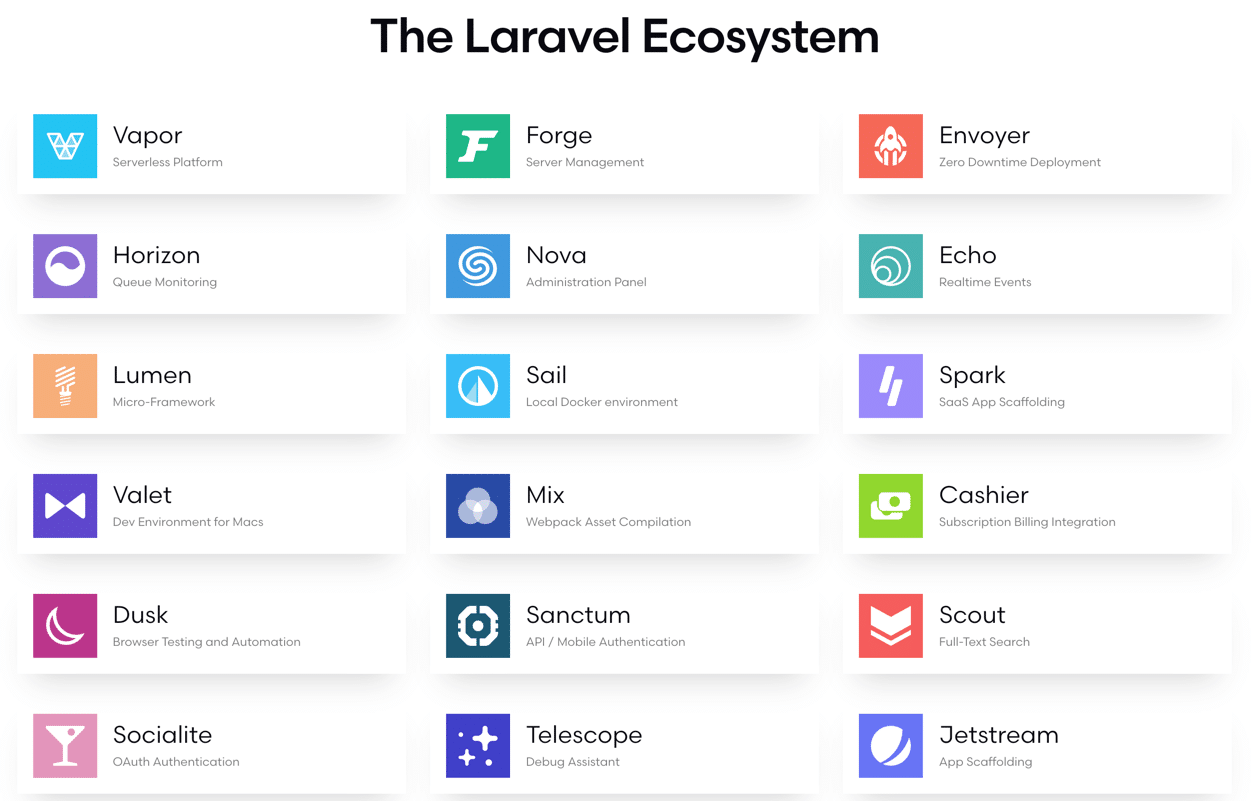
Both backend and frontend developers take advantage of frameworks to expedite their work processes. Some of the most popular backend development frameworks include:
- Django: An open source framework that can be used for various applications while also implementing a secure, feature-rich development environment. Developers lean toward Django since it’s considered one of the fastest frameworks while offering a less steep learning curve than what you may find with other frameworks.
- Spring Boot: Using the Java language, advantages of using Spring Boot as a framework include its easily customizable app properties, support for Jetty and Undertow, and improved dependency management. The open source framework works best for apps and offers functionality to Java applications.
- Laravel: This backend framework has a modular packaging system and a dependency manager built into the framework. It’s great for tapping into relational databases, live commenting, caching, improving your authentication, and simplifying the API process.
- Rails: This server-side app framework focuses on structuring databases, web services, and complete websites in a cost-effective, consistent manner by offering one of the most popular, straightforward backend framework options out there. The goal behind Ruby is to achieve development results in a bug-free environment, while also scaling up websites, even if the site plans on supporting an incredibly high number of users.
- ExpressJS: Primarily used for building APIs and applications, the ExpressJS framework functions as a backend, open source component, but also a frontend solution for specific databases like NoSQL. NodeJS serves as the programming language inside ExpressJS.
- Asp .NET: Touted as a modular framework for minimal coding, improved maintenance, and cross-platform support, the ASP.NET Core strives for superior performance compared to other frameworks, as well as an experience that limits the amount of code throughout an entire project. The C# language powers this framework.
- CakePHP: Often used for media-oriented websites, the CakePHP framework is written in PHP, and the extremely popular open source framework has its roots in the Ruby on Rails system, yet it focuses more on data mapping, active recording, and object-relational mapping. Its flexibility and extendability make CakePHP an ideal choice as a backend framework. It allows developers to generate reusable pieces of code to spread out and utilize on other projects, or within the same project.
- Phoenix: The primary purpose of the Phoenix backend framework is to generate high-performance applications, most of which have scalability built-in from the start. Productivity is at the core of Phoenix, so you’ll find fewer bugs due to its improved fault tolerance and elements that help out with reliability–and you’re able to run quite a few occurrences at one time, speed through the development process, and not have to worry as much about typing mistakes.
Frontend Frameworks (and Libraries)
On the frontend side of things, developers can choose from frameworks and libraries. Sometimes the line is blurred between what constitutes a library and a framework, but, in general, a frontend framework is a template of files, languages, and tools to quickly construct and scale the front part of a web app or website. When comparing backend vs frontend, a frontend framework performs tasks like website styling, managing AJAX requests, and figuring out how backend files are used and presented on the frontend.
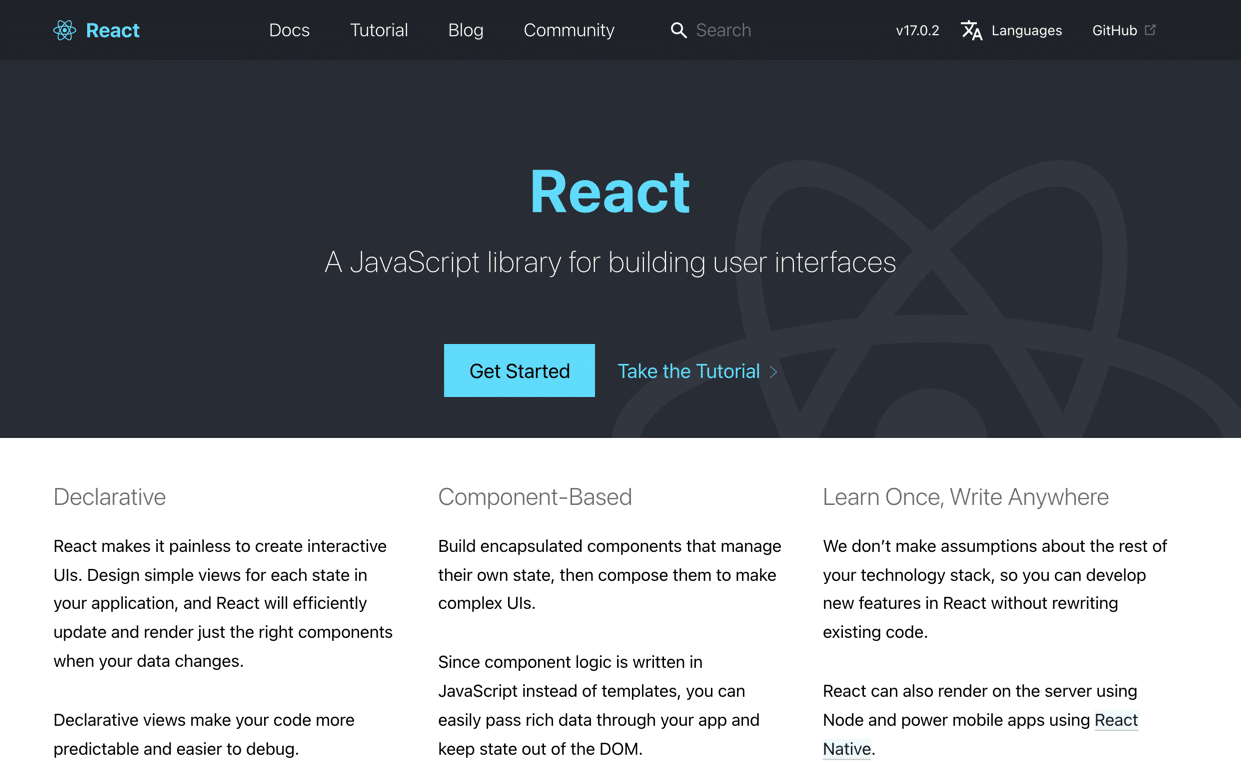
On the other hand, Libraries tend to “dump” more resources onto the developer without providing as much structure. Some libraries are borderline frameworks, and frameworks typically contain what would be considered a library. Simply put, a library may help a developer perform specific tasks but not require any architectural site style of the developer. Libraries serve as large collections of resources as opposed to guiding foundations.
Frameworks are usually smaller packages meant to complete a specific purpose and essentially “force” the developer into following specific guidelines, languages, and architectures. Frameworks are usually considered better for efficiency (since they’re like preset templates), while libraries provide more freedom (but far less assistance, so they’re not meant for scaling rapidly).
Take a look at some of the popular frontend frameworks and libraries:
- React.js: Marketed as a JavaScript library for building user interfaces, that’s exactly what you should expect from the Facebook-managed library. React.js features include user interface components that remain stable and secure throughout the development process; an SEO-friendly set of tools ideal for reusing in other parts of the app or on other projects; fast debugging; boosted speed; and data binding that’s completed in a unidirectional manner.
- AngularJS: The AngularJS frontend framework comes from the folks at Google. It uses the Typescript programming language along with real-time syncing between the development model and the actual view of the product. The TypeScript language was implemented in Angular to assist developers who want to locate bugs quickly, cut out writing errors, and keep all of the code neat and understandable; all of this is offered with TypeScript (which is related to JavaScript).
- Bootstrap: If you’re planning on building the frontend to a responsive website, you’re probably looking into the Bootstrap framework. Some people call it a framework, but it’s more of a library with an incredible frontend toolkit, various prebuilt components, and some impressive plugins for combining with any HTML, CSS, or JavaScript files you plan on implementing in with a mobile-friendly website.
- Vue.js: This is another frontend framework/library that uses the JavaScript language, similar to React.js, and the primary purpose of the framework is to develop one-page apps and online interfaces. It’s one of the simpler frameworks by design, offering built-in CSS animations and transitions, various HTML templates, and a much smaller size than other comparable frameworks.
- jQuery: Also a framework with JavaScript languaging, jQuery’s roots span back to the year 2006, making it one of the earliest options for developers to easily construct frontend interfaces with a framework (jQuery can be found in a significant portion of the internet, and it has a strong community that helps those working with the framework). Overall, it’s a browser-friendly, mobile-oriented framework most notable for minimizing the amount of JavaScript code needed for frontend website interfaces.
- Ember.js: Continuing with JavaScript-built frameworks, Ember.js provides faster development potential, improved organization, and options for large teams to integrate, debug, and create a stable system in its entirety. Utilized by top companies like LinkedIn, Apple, and Square, Ember.js is no slouch, mainly due to its simplified development methodology, patterns, common idioms, and standard practices that more people can understand.
- Flutter: This one is unique after talking about so many libraries and frameworks that cater to the CSS, HTML, and JavaScript users. Instead of the industry standards, the frontend Flutter framework relies on a programming language called Dart, which helps with making high-performance mobile, desktop, and web apps, pulling everything from one codebase.
- Semantic-UI: Sticking to simpler, standardized languages like HTML and JavaScript, Semantic-UI caters to those looking to develop frontend interfaces at a rapid pace and to generate responsive website layouts using concise HTML, simplified debugging tools, and thousands of theming variables. Along with over 50 UI components and 5,000 commits, it’s a framework that plays well with other libraries and allows you great flexibility.
- Materialize: Much as its name suggests, this frontend framework speeds up development for modern, responsive websites, all while using a material design approach. A few themes are included with the framework, and developers are prompted to use JavaScript and CSS to manipulate components, generate items like forms, and produce web designs with bold, graphic elements and motion to grab attention.
- Backbone.js: Functioning as a library for web applications, Backbone.js provides an expedited platform for working on projects with JavaScript, and for creating single-page web apps, but with the added benefits of syncing multiple parts of the web app. It works together with jQuery and other frameworks and libraries like Underscore.js.
- Foundation: You can make a wide range of mobile-first web apps, sites, and even HTML emails with Foundation, as the frontend framework presents a quick, responsive grid for development with CSS and HTML. The developer gets to take advantage of basic elements like buttons, snippets, and navigational menus, while also utilizing prebuilt templates. That makes Foundation a common choice for many frontend developers — since it offers some of the most common patterns required to build a mobile website.
Backend Languages
You may have noticed that all of the frameworks and libraries in the previous sections function with specific programming languages. That’s because frameworks serve as core foundations when developing either frontend or backend web apps; the pieces that hold those foundations together are the programming languages.
Back to our home-building analogy, frameworks are like collections of windows, drywall, and tools used to build the house. Programming languages are like the raw materials that go into those elements to make them work, like glue, glass, and wood for windows.
The programming languages allow developers to write out scripts, instructions, and site files that are eventually executed by a computer. Therefore, a frontend or backend developer must be well-versed in a particular language to create an app or website with a framework.
They can then use frameworks as shortcuts while also typing in their custom coding using the same language. The languages get typed into something like a text or HTML editor, compiled for organization, then converted into a machine language so that the computer can process the data and complete the set of instructions required.
Backend languages correlate directly with backend frameworks and help process backend workings like business logic, database calls, networking, image processing, and much more.
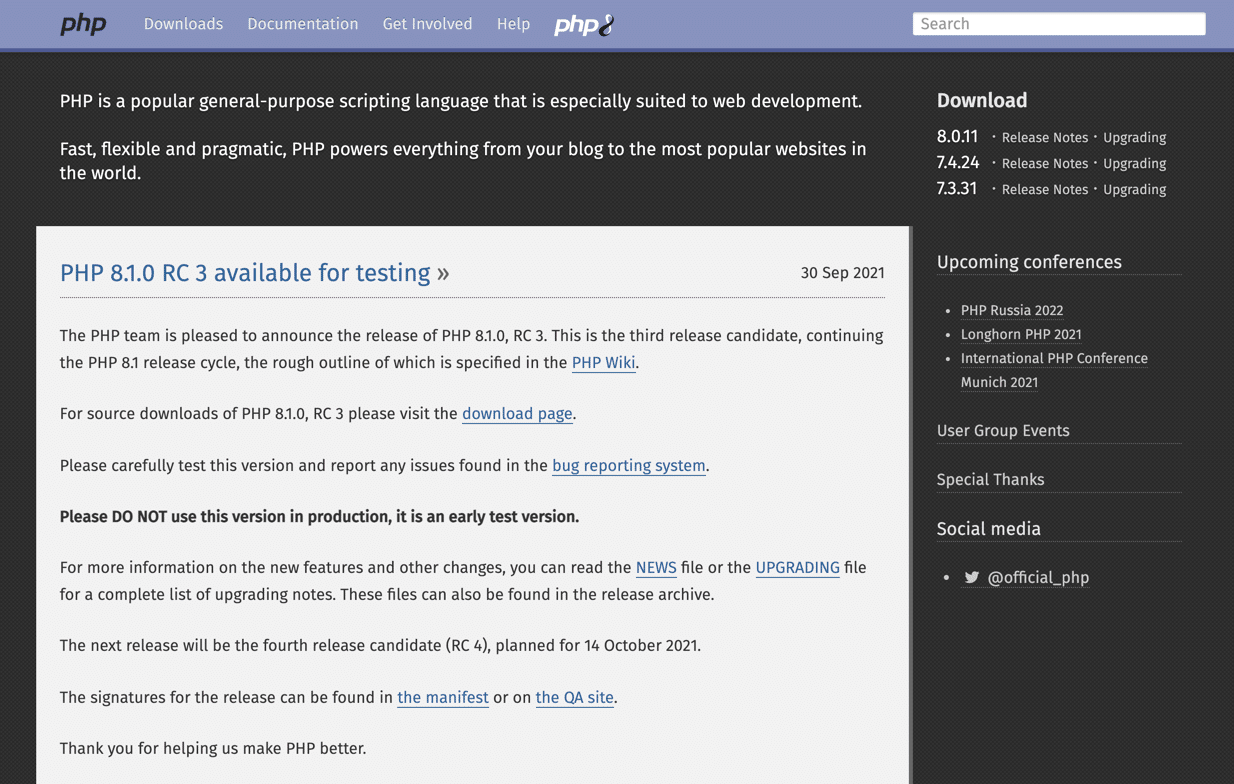
These languages are most commonly used in backend frameworks, or whenever working on a backend project in any form:
- PHP: Perhaps one of the most well-known backend languages, PHP provides an all-encompassing, general scripting language for all sorts of web development. It interacts with the frontend language of HTML, but differently from how JavaScript interacts. It’s available for all major operating systems, offers error reporting, is secure, and gives the developer extreme control without using long lines of code.
- Java: This server-side language was introduced in 1995, making it reliable for mobile apps, desktop apps, web servers, web apps, database connections, and more. Although many think Java is the predecessor, or in some way related, to JavaScript, they’re entirely different languages. When it comes to features, Java comes as a free, open source language, works on most major operating systems, and is somewhat secure, fast, and simple to use. It’s an object-oriented language for a manageable development environment, and many people switch to or from Java and C++ (or Java and C#) since the languages are so similar.
- Python: Another mainstream server-side language is called Python. You can find Python implemented on apps and websites like Instagram, Facebook, Quora, and many other larger tech companies. Python works well for math, software development, scripting, and its more common use: backend web development. The whole point of Python is to improve readability, so it’s somewhat similar to the English language.
- C++: Often taught in school for running mathematical functions, the C++ programming language also serves as a way to generate online applications, website elements, and high-performance calculations. As a popular (if not one of the most popular) programming languages, its backend use comes in handy for adapting to multiple platforms, reusing previously created programs, and integrating with just about any graphical user interface. Not to mention, C++ looks close to Java and C#, so people learning those languages will find it easy to jump from one language to another.
- JavaScript: We said JavaScript is different from Java, and that’s true. JavaScript provides development potential for both backend and frontend purposes, being used in both types of frameworks. When it comes to backend development, JavaScript extends all core languages to provide specific objects for the overall website, such as making an app communicate with a database.
- Ruby: The Ruby language has continued to gain popularity for backend development of web apps and sites, primarily because it’s much easier to read and write; it looks very similar to English. It’s also an object-oriented language that removes the need for a compiler to run websites and apps, and it pairs perfectly with its partner framework, Rails.
Frontend Languages
The frontend languages used in client-side development have a more customer-facing focus. As such, these languages are better known to the general public. These are the languages the average person thinks about when any type of web development is mentioned.
Frontend languages are essential in producing user-friendly websites, web apps, and mobile apps. They’re how developers generate beautiful interfaces, high-performance websites, and all the elements you typically interact with when visiting a website.
When choosing the right frontend language, developers start with what they know, then opt for specific frameworks and languages that fit the desired result. For instance, HTML offers users an essential, high-performance experience, making sense to build simple websites. And CSS takes HTML one step further when it comes to styling.
However, you must never forget that some of these languages work together to produce the best result. Many websites have some combination of HTML, CSS, and JavaScript that all work in concert.
Here are the main frontend development languages:
- HTML: Synonymous with the core foundations of web design, HTML (Hypertext Markup Language) provides the essential, primary markup language for developing any type of website online. HTML can compose everything from text to images, links to headings, and provide certain levels of styling to show where those items may end up on the page. By itself, HTML works well for generating static web pages. Still, when in conjunction with other languages like JavaScript and CSS, you can complete far more advanced tasks, generate modern styling, and affect the behavior of other languages within the site coding.
- CSS: An acronym for Cascading Style Sheets, CSS is all about manipulating frontend elements to make them more presentable, cleaning up the amount of HTML code required, and styling processes that aren’t possible with HTML alone. Whereas HTML contains the actual frontend content of the website (and a few basic styling options due to the limits on tags in HTML), CSS provides the styling for that content, and it’s all stored in external stylesheets that go into CSS files on the server.
- JavaScript: We talked about JavaScript as the most popular programming language for the backend section, but it’s also considered one of the go-to languages for frontend developers. The frontend version of JavaScript works in tandem with HTML and CSS to produce a beautiful layout. While HTML focuses on document structure, CSS on styling, JavaScript provides an essential solution for letting the frontend client interact with the server.
- Dart: Known for its similarities to Java and C languages, Dart is for mobile app development and programming, meaning you can create just about anything from the language, including apps, websites, servers, and desktop software.
Databases
Along with languages, frameworks, and libraries, frontend and backend developers differ in working with databases.
Databases are usually only managed by backend developers. Full-stack development handles databases as well, but a frontend worker only interacts with databases to ensure the user interface produces the right results.
In short, a frontend developer will test out the database functionality, review results, and check to see if the connection is smooth. Still, any problems found by the frontend developer will most likely be documented and sent to the backend developer for analysis and repair.
So, the backend utilizes databases, integrates them with systems, and manages them into the future.
But what databases are used?
Quite a few databases are available, but there are two standard types for backend web development:
- Relational databases
- Non-relational databases
Relational databases, often referred to as SQL (Structured Query Language) databases, use tables to organize and define relationships between data. SQL is the language implemented within relational databases, so it structures tables, moves data, and allows developers to bend the database’s features to their own needs.
When using tables in a database, a backend developer can complete the following tasks with ease:
- Generate database records
- Update database records
- Remove database records
- Search the entire database
- Populate databases with bulk data
Developers also go beyond the regular updating, searching, and deleting data points by maintaining and optimizing the entire data set. Overall, an SQL database is vertically scalable, meaning you implement any system (like processors and storage) into the backend development and take advantage of whatever resources are available.
However, all computers have limits, so it may be difficult to expand upon the limits set by your current machinery. Suppose data loads rise above what’s offered by the current machine. In that case, you must either shift to a larger system or reconfigure the database as a NoSQL database (which is horizontally scalable).
Here are some other things to remember about SQL or relational databases:
- They use predefined, structured schema instead of less structured, dynamic data schemes.
- Due to its vertical scalability, SQL databases require high-performance hardware that’s often specialized for the job. That’s because you don’t want to end up in a place where the database cannot support data increases.
- Relational (SQL) database examples for web development include MySQL, Sybase, PostgreSQL, and Oracle SQL.
- SQL databases make the most sense for projects that require complex data queries and data validity.
- They’re not great when trying to store complicated sets of hierarchical data.
- Many SQL databases are open source, but you may have to pay for some depending on your choice.
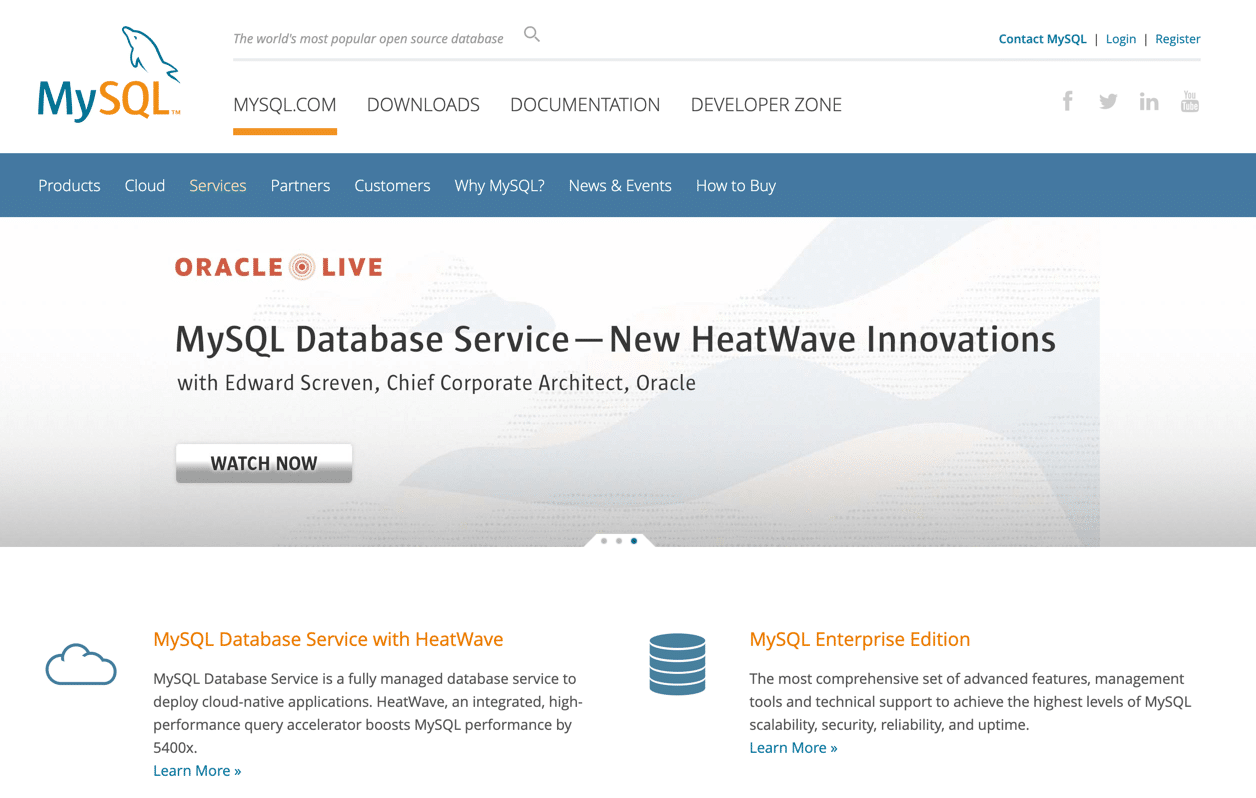
On the other end of the spectrum, a non-relational or NoSQL database offers a databasing solution that’s easier to scale than SQL, storing incredible amounts of hierarchical data, and producing high-performance web apps. Overall, it’s a valuable database type when the storage needs get too high or when there’s an immediate demand for rapid data distribution, usually in real-time. It’s no wonder that the biggest social networks and search engines like Facebook, Twitter, and Google all lean heavily on support from NoSQL databases.
Unlike the structured table format of an SQL database, NoSQL, non-relational databases offer advanced technologies for storing everything from structured to non-structured data. It even supports things like polymorphic storage.
That’s because NoSQL utilizes graph databases, pairings, and document logs instead of the basic table storage from SQL. NoSQL has vertically scalable potential, minimizing the need for the highest performance machines. Instead, offering a way to upgrade as the development need comes along and links to other machines if necessary.
This also comes from NoSQL’s dynamic schema. It’s all far more flexible with an unstructured database.
Non-relational databases include MongoDB, Cassandra, Neo4j, and Redis. Those are the product names a backend developer would look into when implementing a NoSQL database.
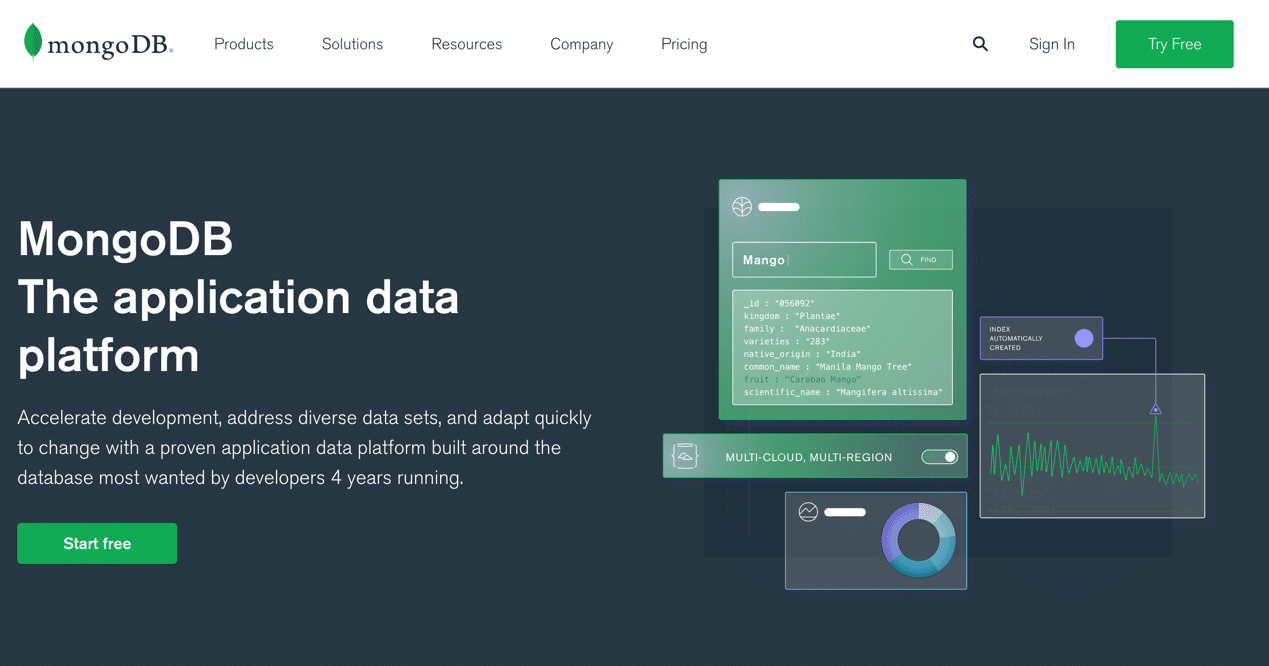
Here are some other thoughts on NoSQL databases:
- They’re all open source.
- They’re best for massive amounts of data storage and flexibility.
- You’re not going to find them suitable for complex queries. Stick to SQL databases for that.
- NoSQL does well with hierarchical data storage and management.
- The idea is to provide data fast, sometimes at the expense of accuracy.
Backend vs Frontend Developers: How Do These Jobs Differ?
We now know the tools used (like frameworks) and languages embraced when working in backend vs frontend development fields. But what about the actual jobs? What’s it like on a day-to-day basis working as a frontend or backend developer?
We’ve explained that each type of development takes a specific range of skills, implying that the work that goes into the jobs also varies. And that’s right.
Let’s take a look at the tasks required of each development type, along with the job titles available for both frontend and backend workers.
Frontend Development Tasks
- Using frameworks and creating new, user-facing code for the entire architecture, ensuring an efficient, appealing user experience.
- Working with AJAX to improve how websites present data and interactive elements while dynamically loading specific server data in the background without reloading the page.
- Interacting with backend developers to combine backend elements like databases with frontend interface components such as forms, buttons, and menus.
- Creating mockups, wireframes, and other prototypes and moving them through an idea to a final product.
- Testing interfaces and debugging to ensure the user experience is as flawless as possible.
- Thinking of ways to improve the user experience, using out-of-the-box thinking and communication skills to interact with product managers, customer support reps, and other stakeholders.
- Accepting suggestions, critiques, and changes from stakeholders, and even users, then converting those thoughts into codified solutions on the other end.
- Assembling all visual pieces from other creative workers and bringing it all together to ensure everything works together as expected. Frontend developers essentially take everything from photographs (from photographers) to text (from copywriters) and mold it all together in a final work of art.
- Working with content management systems, APIs, and other tools to complete the design.
- Some frontend developers are also expected to provide graphic design services, content, or anything else that goes on the front side of a website; it all depends on the resources available to the company and who else was hired to complete the job.
Backend Development Tasks
- Handling server-facing application logic and figuring out how to integrate vital tools into the infrastructure.
- Setting up databases to store everything from email contact information to detailed employee profiles, people dating, or products.
- Working to ensure the databases in the background are ready to communicate with the website or application.
- Interacting with IT professionals within the organization to handle server maintenance. Sometimes most of the server maintenance falls entirely into the hands of a backend developer, depending on the organization. Some companies look to their backend developers as the all-knowing tech person.
- Writing code to enhance the functionality of a database, improve how the server produces results for the final application, and integrate all the moving parts.
- Using frameworks to build and finalize the entire backend infrastructure of the website or app.
- Monitoring the website’s health, running backend security protocols, and handling any bugs that need resolving.
- Programming with common backend languages like Python, Java, and PHP.
- Creating clean, well-documented code that is also portable for sending out to stakeholders and being used by other people in the company to move on with the project.
- Collaborating with product managers and other stakeholders to fully understand the project’s foundation. Therefore, communication skills are essential, and the ability to take the information communicated and turn it into the most effectively coded solution possible.
Job Types Available for Frontend Developers
The tasks above all come together to form a more defined job role for developers. Yet, not every website project is the same. Some companies need frontend developers to make one-page mobile landing pages where you’re mainly working with iOS and Android interfaces.
In contrast, another company may require you to simplify a data-heavy website by eliminating the overuse of HTML and making a plan that mainly utilizes JavaScript.
As such, here are some of the job titles you can expect to see for frontend developers:
- CSS Developer
- CSS/HTML Developer
- Content Manager
- Frontend Accessibility Expert
- Frontend DevOps Engineer
- Frontend Engineer
- Frontend SEO Expert
- Frontend Testing Engineer
- Frontend Web App Developer
- Frontend Web Designer
- Full-Stack Developer
- General Frontend Developer
- HTML Developer
- IA or IxD Designer
- JavaScript Developer
- Mobile Frontend Developer
- Site Developer
- UX Designer
- User Interface Developer
- Web Designer
- WordPress Developer (see salary information here)
Job Types Available for Backend Developers
As you can see from the job titles for frontend developers, a few go-to terms get combined with more specific words, allowing companies to hone in on the exact types of people they need. You may also see made-up job titles like “Something Hacker,” “Something Ninja,” or “Something Rockstar.” Still, these don’t tell us anything and are usually an attempt by an organization to look whimsical.
You’ll find similar trends for backend developer job titles, except they usually have some reference to the backend, engineering, or the specific type of programming languages used.
Here are some examples:
- API Backend Developer
- Backend Developer
- Backend Software Engineer
- Cloud Developer
- Database Developer
- DevOps Engineer
- Ecommerce Developer
- Fullstack Developer
- iOS Developer
- Java Developer
- Node JS Backend Developer
- PHP Developer
- Programmer
- Python Developer
- Software Engineer
- Web Developer
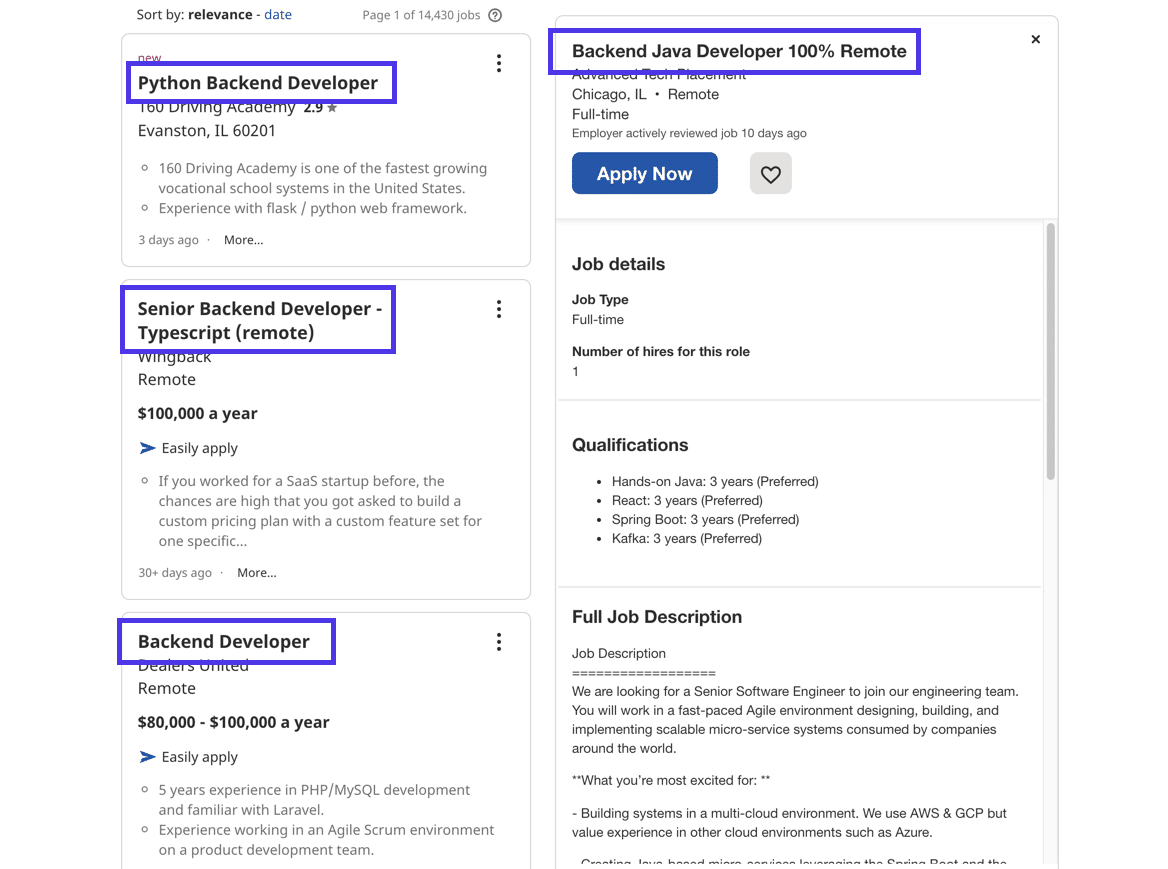
You may also see development job titles focused on the website builder, content management system, or eCommerce platforms in use, such as Magento Developer, Shopify Developer, or WordPress Developer.
Keep in mind that many job titles aren’t exactly accurate. It all depends on the person who wrote a job description, and the company hiring for that job. For instance, a Software Engineer doesn’t directly mean that you’re talking about a Backend Developer, but it’s often used to indicate that. A Software Engineer technically implies “programmer, but not for the web,” so it’s not an accurate description of a backend developer.
Frontend vs Backend Developer Salary
If you plan on working in website development, you probably want to know how much you could get paid after getting a diploma or going through a training program.
So, what are some examples of frontend vs backend development salaries?
- According to Salary.com, the median US salary for a frontend developer is $119,224, ranging between $106,000 and $130,000.
- The average backend development salary (from Salary.com) comes in at $106,255. The range is between around $91,000 and $120,000.
- Glassdoor states an average base pay of $87,136 for frontend developers, ranging between $52,000 and $147,000.
- Backend developers, as measured by Glassdoor, make an average base pay of $80,086 and range anywhere between $48,000 and $133,000
- Indeed.com’s analysis dives a little deeper with average salaries and bonuses, stating that frontend developers in the US make an average of $103,380 per year and a cash bonus of about $2,500 per year.
- Also, based on Indeed.com data, frontend workers have an average salary of $117,811 per year and $4,000 in cash bonuses each year.
You can also check out our in-depth review on average web development salaries for information on:
- Web development job demand
- Skills required to become a paid web developer
- Average web developer salary from multiple sources, based on work experience, job type, and more
- How to start a freelance career as a web developer
- Salaries by programming language
We’ve also published more detailed information on the average PHP developer salary. That article gets specific on backend jobs and wages, along with whether or not PHP development is an excellent job, to begin with.
This isn’t a hard rule, but backend development jobs offer higher salary potential. Still, according to our sources, many frontend developers get higher starting and average salaries when compared to backend developers. Why’s that the case?
Overall, it depends on your skills, the complexity of the specific job, and how rapidly you grow with a company. In addition, working in some locations should render a higher/lower salary based on variable living costs.
Here are examples of differences in development salaries based on locations:
- Backend developers, on average, make more than frontend developers in San Francisco ($156,175 for backend vs $146,806 for frontend). Still, frontend developers have higher average salaries in Seattle ($122,256 for frontend vs $118,875 for backend), according to regional analysis for frontend and backend payments from Indeed.com.
- The highest paying cities for frontend development include San Francisco, Seattle, Los Angeles, Durham, New York, Austin, Chicago, and Denver (in that order). In contrast, the highest paying cities for backend development include San Francisco, San Jose, Boston, New York, Chicago, Seattle, Dallas, and Las Vegas (also in that order).
- Compared to the national average, states with the lowest paying frontend development jobs are Idaho, Maine, Mississippi, New Mexico, Alabama, South Carolina, and Delaware.
- Compared to the national average, states with the lowest paying backend development jobs are South Carolina, Kentucky, Indiana, Florida, Kansas, Oklahoma, Louisiana, Missouri, Tennessee, Michigan, Wisconsin, Ohio, Delaware, Nevada, and Utah.
With all of that in mind, we should remember that the cost of living changes based on your location, so a lower salary from a backend development job in Indianapolis would go much further per dollar when compared to a similar position in New York City or Los Angeles.
Overall, it appears that backend developers get rewarded for highly complex, technical projects, especially when that developer has been around for a long time and becomes crucial to the continued success of a company. That’s why we tend to see higher growth for backend developers.
This ties somewhat into the perception of backend development from non-coders. They can understand frontend development because of their familiarity with visual components. Backend development feels and looks like gibberish languages, boring databases, and magical processes that no one else understands but the developer.
However, some sources say frontend developers have higher average and starting salaries. We can only guess, but this may be due to the growing demand for highly visual, interactive interfaces, as technology companies are vying to impress everyday users with fancy designs.
We’re also living in a mobile-centric world, which almost always falls into the hands of a frontend developer.
Regardless, the salary potential for backend vs frontend development looks promising right now, and well into the future. Talented, new developers can start with a healthy $50,000 salary and move their way up to six figures if producing quality results. Both professions are in high demand and will remain that way as technologies grow and evolve.
Which Type of Development is Right For You?
A career in web development generally starts with this type of question. Would you like to create websites, apps, and other projects by working on the front or backend? It’s possible to immerse yourself into a full-stack development environment, but you generally have to start with one or the other so as not to get overwhelmed.
So, how do you go about answering that question?
First of all, you should run through a list of what you enjoy and how those interests relate to technology:
- Are you fond of beautiful designs, visual architectures, and working with styles to render something that a consumer may use? If so, fronted development is an excellent place to start.
- Does the idea of using logic combined with languages to manipulate an interface sound interesting? So, are you ready to challenge yourself to solve problems for which you can eventually see visible results? Again, frontend development follows along with these preferences.
- Do you enjoy the objectivity of mathematics, the ingenuity behind algorithms, and the idea of figuring out problems that may not have solutions yet? For those types of people, we recommend backend development as a starter.
- Are you interested in databases, business problems, understanding servers, and linking to cloud interfaces? All of these tie into the backend development world.
- Do you have a penchant for tinkering with APIs, plugins, and third-party services? Backend development looks like a suitable career path for you.
In addition, you may have to opt for a particular side of the developing world based on necessity or what your employer requires. For instance, if a project needs a database management solution, the organization must find a backend developer.
Here are some reasons to choose backend vs frontend based on the project type:
- A backend developer is required for database management functionality.
- You’ll also want a backend developer for most programming jobs.
- If security and accessibility come into the picture, hire a backend developer.
- Framework utilization also falls into the realm of backend development.
- Frontend developers need a firm grasp of client-side programming languages like CSS, HTML, and JavaScript.
- A frontend developer usually comes into play when working with automation, APIs, and contentment management systems.
- All things mobile-friendliness and responsiveness fall into the hands of frontend developers.
- Frontend workers also typically run through debugging code and testing user interfaces.
And, of course, picking backend vs frontend development depends on the languages and frameworks required for the job.
Sometimes it’s not enough to call yourself a backend developer when companies need a backend developer proficient in the Python programming language and the Django framework. The same can be said for frontend development. Projects may look for frontend developer skills in CSS, JavaScript, HTML, and frameworks like Angular and React.
Summary
Overall, comparing backend vs frontend development requires looking into the key differences between the two. Furthermore, it’s essential to explore the unique frameworks, libraries, languages, and databases used for backend and frontend purposes.
Consider the job type potential for those two sides of the development spectrum. It’s also worth considering the amount of money you get paid.
Backend developers are more focused on server-side developments like database communications, framework utilization, and programming, with languages like JavaScript, Python, and PHP in their arsenal.
As for frontend development, you can expect more focus on design, styling, and coding challenges to generate versatile, visually appealing interfaces for users. As such, frontend languages include HTML, CSS, and JavaScript.
To sum it all up, backend development is generally seen as more technical, with frontend work being more visual.
Do you have any questions about backend vs frontend development? Let us know in the comments section below. And yes, we’re hiring.



Leave a Reply